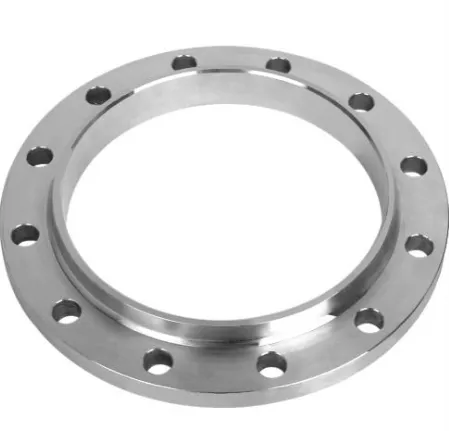-
Cangzhou Yulong Steel Co., Ltd.
-
Phone:
+86 13303177267 -
Email:
admin@ylsteelfittings.com
- English
- Arabic
- Italian
- Spanish
- Portuguese
- German
- kazakh
- Persian
- Greek
- French
- Russian
- Polish
- Thai
- Indonesian
- Vietnamese
- Zulu
- Korean
- Uzbek
- Hindi
- Serbian
- Malay
- Ukrainian
- Gujarati
- Haitian Creole
- hausa
- hawaiian
- Hebrew
- Miao
- Hungarian
- Icelandic
- igbo
- irish
- Japanese
- Javanese
- Kannada
- Khmer
- Rwandese
- Afrikaans
- Albanian
- Amharic
- Armenian
- Azerbaijani
- Basque
- Belarusian
- Bengali
- Bosnian
- Bulgarian
- Catalan
- Cebuano
- China
- China (Taiwan)
- Corsican
- Croatian
- Czech
- Danish
- Esperanto
- Estonian
- Finnish
- Frisian
- Galician
- Georgian
- Kurdish
- Kyrgyz
- Lao
- Latin
- Latvian
- Lithuanian
- Luxembourgish
- Macedonian
- Malgashi
- Malayalam
- Maltese
- Maori
- Marathi
- Mongolian
- Myanmar
- Nepali
- Norwegian
- Norwegian
- Occitan
- Pashto
- Dutch
- Punjabi
- Romanian
- Samoan
- Scottish Gaelic
- Sesotho
- Shona
- Sindhi
- Sinhala
- Slovak
- Slovenian
- Somali
- Sundanese
- Swahili
- Swedish
- Tagalog
- Tajik
- Tamil
- Tatar
- Telugu
- Turkish
- Turkmen
- Urdu
- Uighur
- Welsh
- Bantu
- Yiddish
- Yoruba

Dec . 01, 2024 16:19 Back to list
carbon steel buttweld fittings
Understanding Carbon Steel Buttweld Fittings
Carbon steel buttweld fittings are critical components in piping systems, often used in various industrial applications. These fittings serve as junction points for pipes, enabling changes in direction, branch connections, and alterations in pipe diameter. The durability and versatility of carbon steel make these fittings a preferred choice for many engineers and architects.
Definition and Types
Buttweld fittings are designed for use in high-pressure piping systems. They are manufactured to be welded directly to the pipes, creating a strong and seamless connection that can withstand high levels of stress and temperature. Common types of carbon steel buttweld fittings include elbows, tees, reducers, and caps.
- Elbows These fittings are used to change the direction of flow in the piping system. Elbows are available in various angles, with 90-degree and 45-degree options being the most popular. - Tees Used for branch connections, tees come in various configurations – straight tees and reducing tees, depending on the requirement to connect pipes of different diameters. - Reducers These fittings are designed to connect pipes of differing diameters. A concentric reducer has a uniform centerline, while an eccentric reducer maintains a straight alignment of the tops of the piping systems. - Caps Caps are used to close off the ends of pipes, providing a secure and robust seal.
Advantages of Carbon Steel
Carbon steel is an alloy that combines iron with carbon, providing an excellent balance of strength, ductility, and weldability. The benefits of using carbon steel for buttweld fittings include
1. Strength and Durability Carbon steel has high tensile strength, making it suitable for high-pressure environments. It can endure extreme operational conditions, including high temperature and pressure. 2. Cost-Effectiveness Compared to other materials like stainless steel or alloy steels, carbon steel offers a more economical solution without compromising quality.
3. Weldability The properties of carbon steel allow for effective welding techniques. This quality is crucial in ensuring that the fittings create a strong bond with the pipes they join, minimizing the risk of leaks.
4. Versatile Applications Carbon steel buttweld fittings are used across various industries including oil and gas, chemical processing, power generation, and water treatment. Their ability to perform well in different environments makes them universally applicable.
carbon steel buttweld fittings

Applications of Carbon Steel Buttweld Fittings
The applicability of these fittings can be seen across multiple sectors
- Oil and Gas In the oil and gas industry, where high pressure and temperature conditions are prevalent, carbon steel buttweld fittings are instrumental in ensuring the integrity of pipelines. They are used in drilling, transportation, and refining processes.
- Chemical Processing Chemical plants often require a variety of fittings due to their complex piping systems. Carbon steel fittings can withstand corrosive materials and maintain structural integrity under significant stress.
- Construction In construction projects, especially when dealing with water and wastewater systems, carbon steel fittings are chosen for their durability and cost-efficiency, helping to manage different flow requirements effectively.
Installation and Maintenance
Proper installation of carbon steel buttweld fittings is key to maximizing their performance and lifespan. This requires skilled technicians and adherence to industry standards. Before installation, it is crucial to ensure that all surfaces are clean and free from contaminants to facilitate a strong weld bond.
Maintenance involves regular inspections to check for signs of wear, corrosion, or damage. While carbon steel is robust, it may be susceptible to rust if not properly maintained, especially in humid or wet environments. Implementing a preventive maintenance schedule can help identify potential failures before they become serious issues, ensuring the longevity and reliability of the piping system.
Conclusion
Carbon steel buttweld fittings represent an essential element in the design and operation of modern piping systems. Their strength, versatility, and cost-effectiveness make them a standout choice across various industries. By understanding their types, advantages, and applications, engineers can make informed decisions that enhance the safety and efficiency of their projects. Proper installation and maintenance further ensure that these fittings continue to function optimally, reinforcing the critical networks they serve.
Latest news
-
ANSI 150P SS304 SO FLANGE
NewsFeb.14,2025
-
ASTM A333GR6 STEEL PIPE
NewsJan.20,2025
-
ANSI B16.5 WELDING NECK FLANGE
NewsJan.15,2026
-
ANSI B16.5 SLIP-ON FLANGE
NewsApr.19,2024
-
SABS 1123 FLANGE
NewsJan.15,2025
-
DIN86044 PLATE FLANGE
NewsApr.19,2024
-
DIN2527 BLIND FLANGE
NewsApr.12,2024
-
JIS B2311 Butt-Welding Fittings LR/SR 45°/90° /180°Seamless/Weld
NewsApr.23,2024











